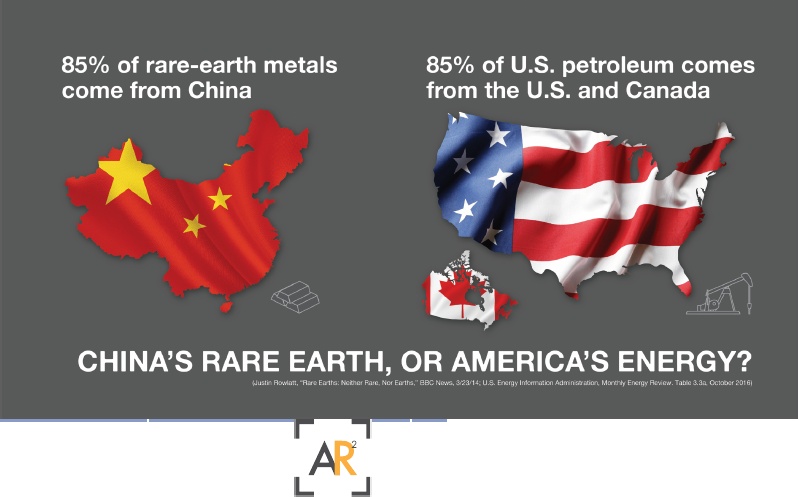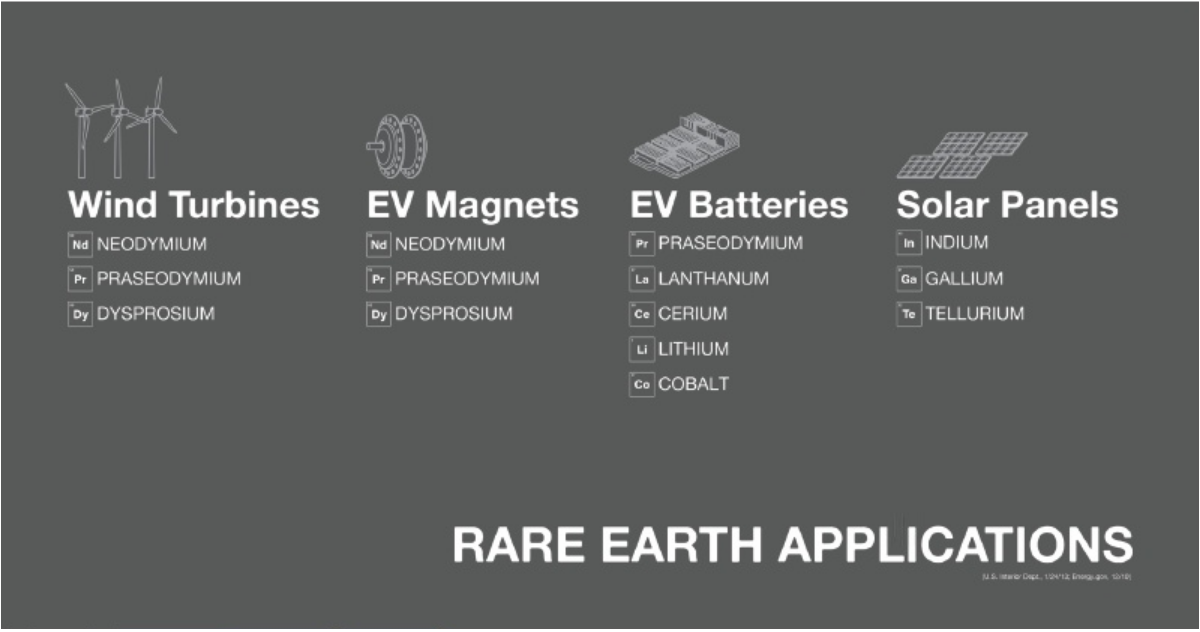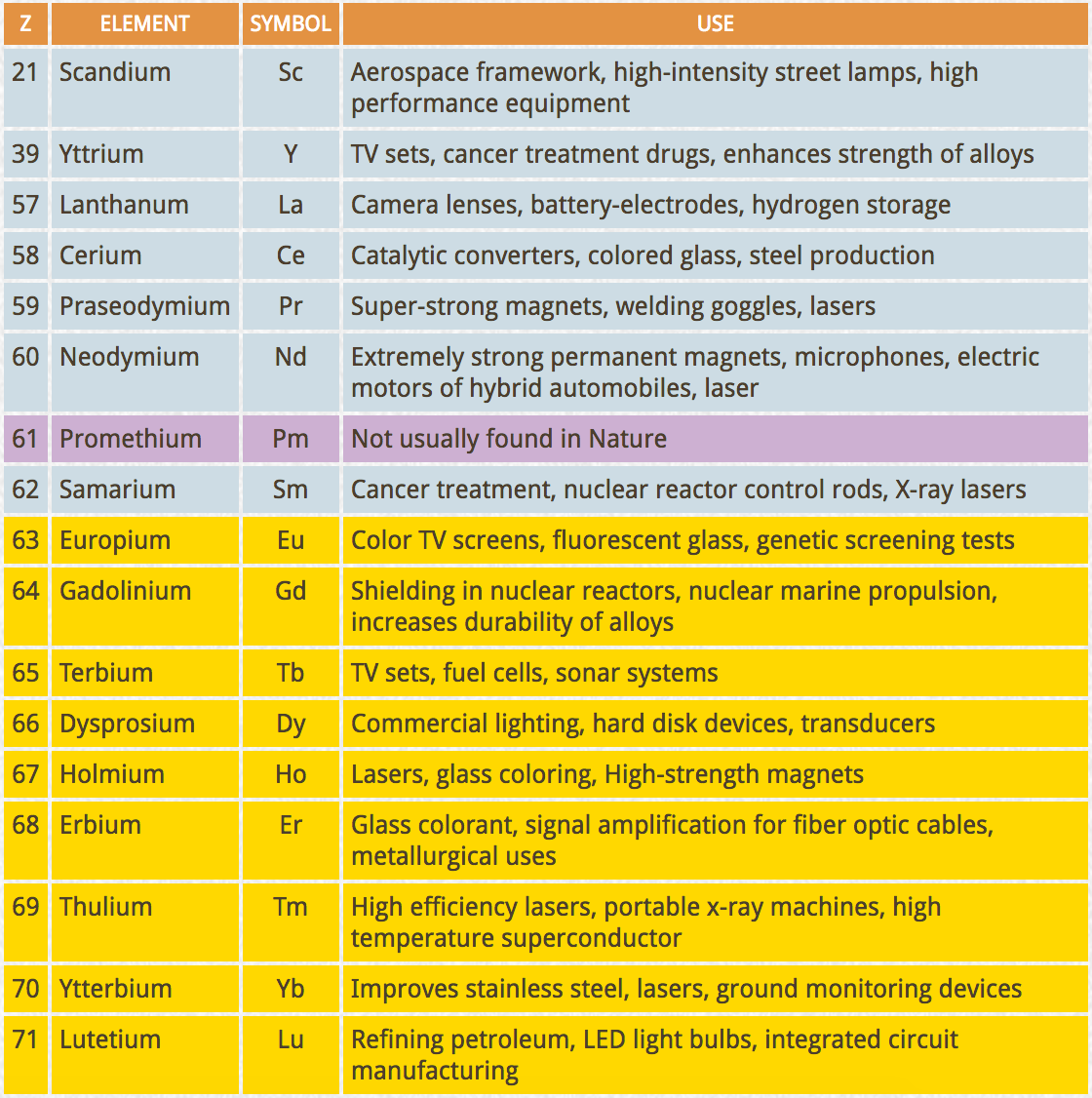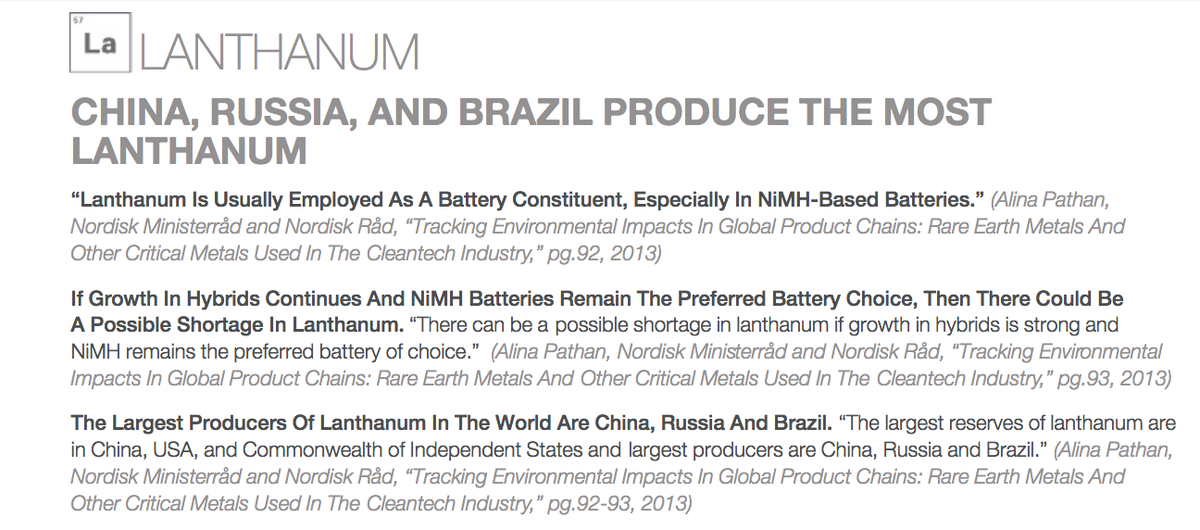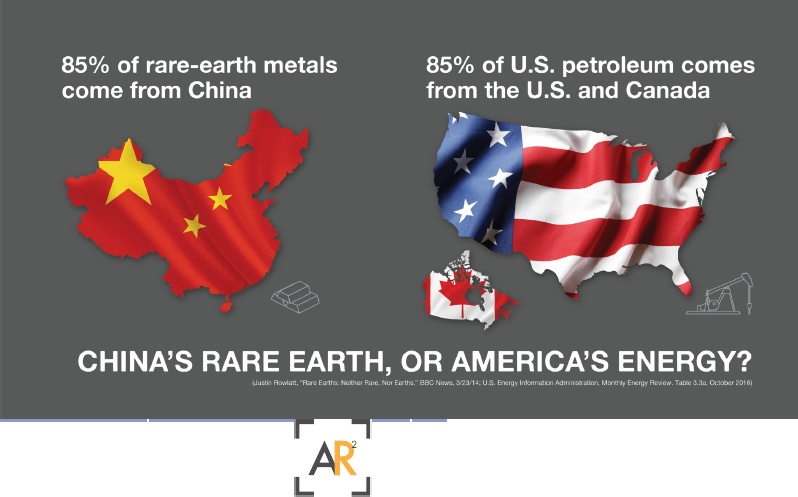A GOP-tied group devoted to promoting alleged hypocrisy among climate action advocates just released a new report that “exposes the horrible human and environmental costs” of solar panels and electric vehicles. The group, America Rising Squared (AR2), as DeSmog has previously reported, launched last year and pays activists to follow and film climate advocates in their everyday lives. The newly published white paper, the group’s first such formal report, attempts to paint a dirty picture of “clean energy,” claiming that the “environmentalist left” ignores the downsides of rare earth minerals that are used in solar panels and electric vehicles.
Here’s what the white paper doesn’t mention: many of the very same rare earth minerals that the AR2 report bashes are critical components of cell phones, computers, cameras, military and defense equipment, and even traditional gas-powered vehicles. What’s more, the petroleum refining process is critically dependent on some of the same rare earths that AR2 lambasts in this white paper.
Rare earths are plagued with problems…but that’s an economy-wide issue, not unique to clean energy
To be sure, the mining and production of rare earth minerals has some serious human rights and environmental problems. Few, if any, solar or electric vehicle advocates would argue that. Environmentalists have been raising red flags about rare earths for at least a decade now, as they have become such an integral part of the digital economy, like the computers that the AR2 white paper was created on. In 2013, Yale Environment 360 ran a deeply reported article on the environmental challenges posed by rare earths mining. Last year, Amnesty International published an even more startling report about cobalt mining, which coincided with a Washington Post investigation on the same issue, to feed lithium-ion battery demand. Technically, cobalt isn’t a rare earth mineral—a distinction the AR2 report fails to make (see chart below)—but criticisms of its production are still valid. This isn’t a problem that is – or can be – ignored by environmentalists and clean energy advocates.
But to claim that these problems track to electric vehicles and solar panels alone is just plain deceptive.
As even Kenneth Green of the conservative and fossil fuel-friendly American Enterprise Institute put it:
Rare earths are critical components in many applications. Fighter jet engines, satellite communication systems and underwater mine detection equipment all require rare earth elements. So do medical devices, hybrid-vehicle engines and wind turbines.
And yet you don’t find AR2 calling out the “horrible human costs” of fighter jet engines or satellite communication systems or medical devices or underwater mine detection equipment.
Gas-powered cars rely on rare earths too
Much of the white paper is devoted to the particular rare earths and other materials that electric vehicle batteries depend on. And it’s true that the lithium-ion batteries that power many EVs are dependent on some troublesome materials, including graphite, which is not a rare earth metal but has some particularly troubling health impacts in the areas it is produced, as illustrated in this Washington Post article that AR2 cites. (Note the article’s headline, though: “In your phone, In their air.” Or the web-heading: “China pollution caused by graphite mining for smartphone batteries.” Again, this isn’t just an EV problem.)
It’s also true, however, that traditional internal combustion engine vehicles—those that run on gas and diesel—also rely on rare earths, both in the vehicles themselves, and through the very production of the gasoline and diesel that power them.
According to the Chemical Economics Handbook published by IHS Markit, the largest market for rare earths are for magnets, mostly using the so-called “technology metals,” which are used in everything from electric motors to lasers to cancer treatment to nuclear reactors to commercial lighting.
The second largest market by volume for rare earth minerals is for cerium oxide compounds used in polishing powders for steel production. It’s also dusted onto every catalytic converter fitted into an internal combustion vehicle. In other words, every gas-powered vehicle relies on cerium, one of the rare earths singled out in the AR2 report as being a “dirty” feature of electric vehicles.
The next largest use of rare earth minerals is for a product used in petroleum refining, known as “fluid cracking catalysts (FCC).” According to researchers with Grace Davison Refining Technologies, “rare earth metals are a key component in fluid cracking catalyst,” a chemical process that was pioneered by Socony Mobil Oil in the 1960s. In fact, roughly 11 percent of all rare earth materials produced are used in oil refining processes, according to the Rare Earth Tech Alliance.
The refining of crude oil into gasoline and diesel requires the rare earth lanthanum, which AR2 takes to task:
The Grace refineries experts warned in 2010 that “despite the tightening of supply, rare earth metals remain key components of the FCC catalyst and certain FCC additives, and there are no easy substitutes…The recent price escalation is impacting FCC catalyst suppliers and their customers globally.”
AR2 tells half the story on resource dependence
Clearly, oil-powered transportation is also dependent on rare earths, both through the catalytic converters installed in internal combustion engines and in the very process of refining crude oil into the products powering those engines.
Yet, the AR2 report employs deceptive “energy independence” messaging that purposefully confuses and conflates the resource needs of gas-powered cars and electric vehicles. To whit, this graphic:
First, because all gas-powered cars also depend on rare earths, this graphic presents a false choice. Second, if we were to compare fuel to fuel, then the 85 percent of petroleum produced in North America would be contrasted with the fuels used to generate the electricity that power electric vehicles, nearly all of which comes from North America. (The small imports would be some uranium for nuclear generators and a very tiny bit of oil burned for electric generation.)
What’s more, in the spirit of inconsistent comparison (as illustrated in this graphic), we might as well factor in some other aspects of petroleum production dependent on foreign imports. Barite, for example, is used widely in oil and gas drilling. It’s also a mineral commodity that is produced in a limited number of countries, and only twenty percent of what the oil and gas industry needs is produced in the U.S. The bulk of our barite imports come from—you guessed it!—China. According to a 2014 report by the U.S. Geological Survey, 70 percent of the barite used in oil and gas drilling was imported from China. Another 14 percent came from India, with the rest coming from Morocco and Mexico.
To review:
- All vehicles—electric and internal combustion—rely on rare earth metals.
- Nearly all of the energy resources (gas, coal, nuclear, hydro, solar, wind) that power the grid to charge American EVs are from the U.S. and Canada.
- Refining oil into gasoline and diesel requires rare earth metals.
- Oil and gas drilling require minerals like barite, the bulk of which are imported from China.
- The false choice between “China’s Rare Earth, or America’s Energy” is a marketing ploy.
There are already (some) solutions to rare earth dependence
Finally, researchers are finding ways to reduce dependence on rare earths, especially in electric cars. Two researchers at the Worcester Polytechnic Institute (WPI) recently developed a method for extracting rare earths from the batteries and motors of electric and hybrid cars, meaning that they could be recycled for use in new EVs. Meanwhile, another team at the University of Pennsylvania has pioneered a process of separating two particularly popular rare earths from the magnets that inhabit so many digital devices and electric vehicle motors.
Others see a day when electric cars and storage batteries don’t require rare earths at all. Honda, the Japanese automaker that has said that two-thirds of its new car sales will be hybrid or all-electric by 2030, has recently produced the world’s first magnet for EVs that requires no heavy rare earth materials at all. Stripping heavy rare earths out of the manufacturing process is a step in the right direction, though eliminating all rare earth metals is still farther out on the horizon.
As it is for all industries. Everything we do has some environmental impact. To claim that any clean energy or EV advocate calls these technologies perfectly pure energy resources is a straw man argument.
The fundamental question for solar photovoltaics or wind turbines or EVs is not whether they have any environmental impact, but rather whether or not they’re better—cleaner, healthier, more climate-compatable—than the traditional fossil fuel resources that they could displace.
It’s no innocent oversight that the AR2 report doesn’t compare EVs to gas-powered cars or solar and wind to coal-fired electricity. Because any such comparisons, even while factoring rare earth materials, will reveal how much dirtier and more dangerous the fossil fuels actually are.
Check out DeSmog’s research trove to learn more about the PR motivations of America Rising Squared and its partner organizations.
Subscribe to our newsletter
Stay up to date with DeSmog news and alerts


